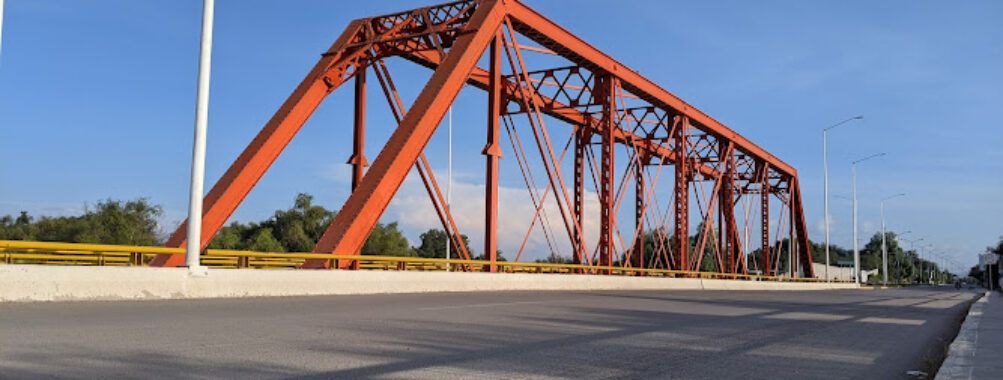
Iron Red Bridge
Table of Contents
Description
The Iron Red Bridge stands as a testament to 19th-century engineering brilliance, its rusty-red metal frame stretching gracefully across the waters below. What really caught my attention when I first visited was how the sunlight plays off its distinctive crimson-colored trusses – it’s the kind of view that makes you pull out your camera without even thinking about it. This historic railway bridge has become way more than just a crossing point; it’s evolved into one of those must-see spots that perfectly captures the area’s industrial heritage.
Key Features
• Iconic red iron truss design that showcases classic 19th-century engineering
• Impressive span length providing panoramic views of the surrounding landscape
• Historic railway infrastructure that’s been preserved remarkably well
• Popular photography spot, especially during golden hour
• Architectural details including original rivets and metalwork
• Viewing areas at both ends of the bridge for perfect photo opportunities
• Rich historical significance in the region’s transportation development
Best Time to Visit
Having been here multiple times throughout the year, I’d say the sweet spot for visiting is during the early morning or late afternoon hours. The lighting then is absolutely magical – trust me on this one! Fall brings an extra special touch when the surrounding foliage creates a stunning contrast against the bridge’s red iron frame. And ya know what? Weekday mornings tend to be quieter, giving you plenty of space to take in the views without crowds. Spring and summer are gorgeous too, but expect more visitors during these peak seasons.
How to Get There
Getting to the Iron Red Bridge is pretty straightforward – though I learned this the hard way after getting a bit turned around my first time! The bridge is accessible by both car and public transportation. If you’re driving, there’s parking available nearby (though it can fill up quick on weekends, just sayin’). For those taking public transit, several bus routes stop within walking distance. Local tip: your GPS might get a little confused in this area, so keep an eye out for the brown tourism signs – they’re usually spot on.
Tips for Visiting
Based on my experiences, I’ve picked up some handy tricks for making the most of your visit. First off, bring a good camera – phone cameras work too, but the bridge’s scale really deserves some decent equipment if you’ve got it. Wear comfortable shoes because you’ll want to explore different angles and viewpoints. The terrain can be a bit uneven in spots, so watch your step!
Morning visits typically offer the clearest skies for photography, but I’ve caught some absolutely stunning sunset shots too. Pack water and snacks since there aren’t many facilities right at the bridge. Oh, and don’t forget to check the weather forecast – the bridge looks completely different (and equally impressive) on cloudy versus sunny days.
If you’re into photography like me, try positioning yourself at various angles to capture the bridge’s impressive structural details. The north end tends to be less crowded and offers some unique perspectives that most visitors miss. During my last visit, I discovered a small path leading to a perfect vantage point – just follow the worn trail about 50 yards from the main viewing area.
Weather can be unpredictable here, so it’s worth bringing a light jacket even on warm days. The wind up on the viewing platforms can get pretty frisky! And while it might be tempting to venture into restricted areas for that perfect shot, stick to designated viewing areas – safety first, folks!
For history buffs, I’d recommend reading up on the bridge’s background before visiting. It really adds another layer to the experience when you understand the engineering challenges they faced back then. Sometimes local history enthusiasts give informal talks near the bridge – they’re full of fascinating stories about its construction and the role it played in developing the region.
Lastly, if you’re planning to spend a while here (and believe me, you might want to), consider bringing a small foldable chair or blanket. The best photos often require patience, and having a comfortable spot to wait for that perfect light can make all the difference. Plus, it’s just nice to sit and soak in the atmosphere of this remarkable piece of engineering history.
Location
Places to Stay Near Iron Red Bridge
Find and Book a Tour
Explore More Travel Guides
No reviews found! Be the first to review!